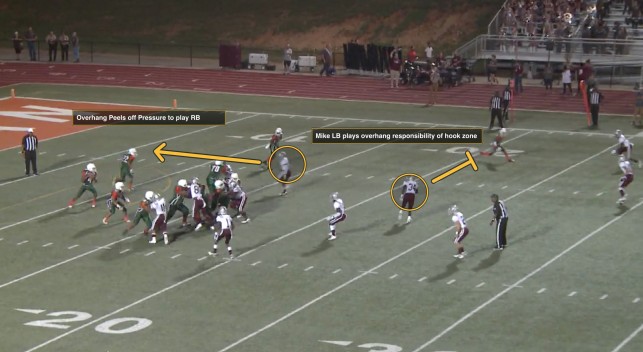Defensive Coordinator
Gardendale High School (AL)
Twitter: @Coach_Firestone
At Gardendale High School we are a Multiple Front Defense. In today’s era of wide-open spread offenses, it is imperative that as a defense we present a variety of looks with our fronts, coverage and with different blitzes. One aspect of defending the pass is incorporating different numbers in the pass rush and the pass responsibilities. Depending on the down we can bring as few as 2 and as many as 7 on the pass rush. The more defenders we bring the fewer eyes we have on the QB and pass defenders and more careful we must be with our coverage.
A standard pass rush for most defenses is 4 defenders. It is no different for us. Not to oversimplify things but one must always account for the 5 eligible pass receivers and keep that in mind when bringing pressure. When creating pressure, one must use common sense and math to know your strengths and weaknesses. The most common pass can be broken down into:
4-man rush =7 defenders for the pass
5-man rush=6 defenders for the pass
6-man rush=5 defenders for the pass
7-man rush=4 defenders for the pass

Here are some examples out of a 3-man front:




As you can see the more, we send on the pressure the greater the risk for an explosive play to happen for either team. The less sent is more conservative and less likely to give up an explosive play. When we send 4 or fewer rushers, we let them go and without pass responsibility because we have 7 people to defend 5 and that gives us a +2 advantage if we want to play coverage.
Here is an example of a line movement with a Linebacker off the edge. A simple Cover 3 concept with 3 deep and 4 underneath. In only sending 4 rushers we are playing more coverage and must sacrifice not getting to the QB especially if the Running Back stays in to pass protect. This is something we rarely do unless we feel we are better upfront than the opponent or in a situation when we need to play it safe and play coverage. If the Running Back comes out, we have 2 linebackers that are dropping to pick him up.










